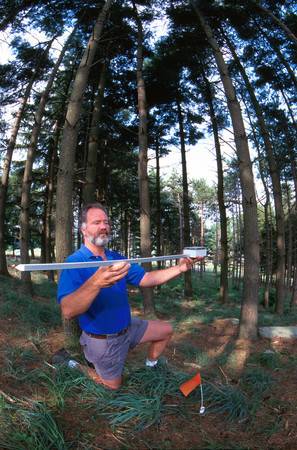I hope everyone knows about p.a.r.(photosynthetically active radiation) and how important it is to our plants. If not check out http://www.efn.org/~k_mccree/Professional/PAR.html written by an old guy with a Ph.D. in Technical Optics, and spent time teaching about plants. Basically it comes down to the lumens all our bulbs are rated by is kinda useless.
But all is not lost, some research shows that studies have been done about streams and forests and such, and they measure PAR simply by purchasing a sensor designed simply for that. The most common tool i see used to measure is a 1m long quantum sensor dubbed the LI-191SA. A little more research shows this sensor is likely silly expensive, its little cousin(spot sensor, instead of a bar) retails around $350. And might require a $1500 control unit(LI-1400) to read its output. Certainly not something for the home grower, but something we should be seeing in the bulb literature.
I'm curious if anyone has any experience with these sensors, or par measurements in general on HID lighting(MH, CMH, HPS, and various "enhanced" color versions of each). Im sure we are all curious where they stack up.
Heres a shot of the sensor in action:
Hurricane

But all is not lost, some research shows that studies have been done about streams and forests and such, and they measure PAR simply by purchasing a sensor designed simply for that. The most common tool i see used to measure is a 1m long quantum sensor dubbed the LI-191SA. A little more research shows this sensor is likely silly expensive, its little cousin(spot sensor, instead of a bar) retails around $350. And might require a $1500 control unit(LI-1400) to read its output. Certainly not something for the home grower, but something we should be seeing in the bulb literature.
I'm curious if anyone has any experience with these sensors, or par measurements in general on HID lighting(MH, CMH, HPS, and various "enhanced" color versions of each). Im sure we are all curious where they stack up.
Heres a shot of the sensor in action:
Hurricane



